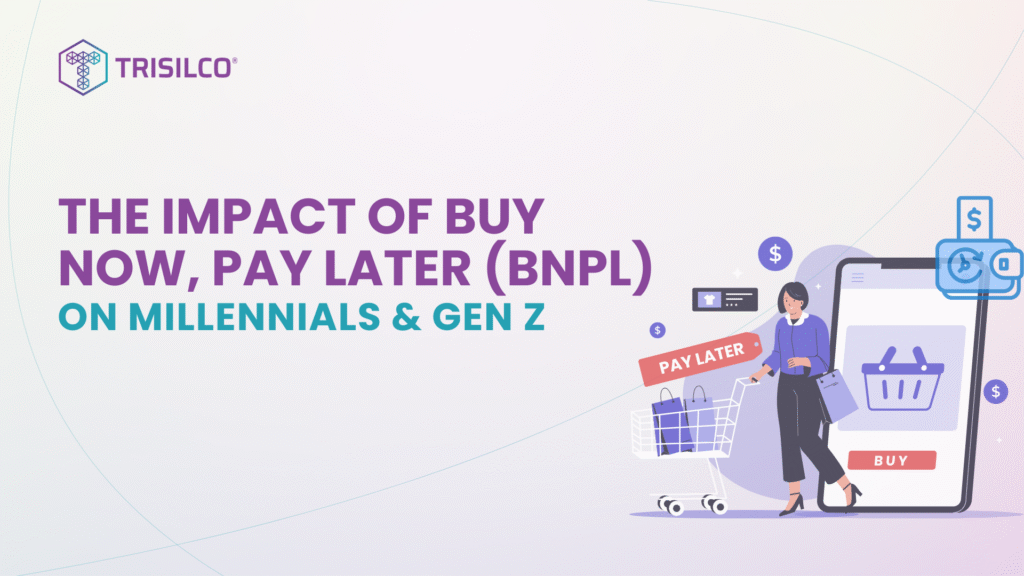The Impact of Buy Now, Pay Later (BNPL) on Millennials and Gen Z

Buy Now, Pay Later (BNPL) businesses have revolutionized the financial landscape in recent years. These services, which let customers buy products and pay for them over time in installments, have been especially popular with Gen Z and Millennials. As this trend continues to grow, it’s important to understand how these age groups manage their finances and approach debt.
Financial Behaviors of Millennials and Gen Z
Born between 1981 and 1996, millennials often struggle financially due to mounting student loan debt, high living expenses, and a challenging job market. These factors have shaped their financial outlook, leading many to adopt a more cautious attitude toward credit. As a result, many Millennials prefer alternatives to traditional credit cards, such as BNPL services, which offer more flexibility and less perceived risk.
Meanwhile, Gen Z, born in 1997 and onwards, is just beginning to enter the workforce. Although some members of this generation have witnessed economic instability during their formative years, they are often characterized by a pragmatic approach to money management. Due to these circumstances, some portions of Gen Z tend to be financially conservative, seeking to avoid debt and prioritize savings from a younger age.
Benefits of BNPL for Millennials and Gen Z
Buy Now, Pay Later (BNPL) services offer a range of advantages that resonate particularly well with Millennials and Gen Z. These services are easily accessible online and seamlessly integrated into many e-commerce platforms, making them incredibly convenient for digital shoppers who value efficiency and simplicity in their online transactions.
Unlike traditional credit cards, many BNPL services provide interest-free installment plans, presenting an attractive alternative for younger consumers who are often cautious about accruing interest and wary of hidden fees.
One of the significant benefits of BNPL is its ability to help consumers manage their cash flow more effectively by spreading the cost of purchases over time. This payment flexibility can be particularly beneficial for larger, necessary purchases, such as electronics, furniture, or educational materials, that might otherwise strain their budgets if paid for upfront.
By breaking down the total cost into manageable installments, BNPL enables consumers to balance their financial commitments more comfortably, reducing the immediate financial pressure.
The rise of BNPL services reflects broader shifts in consumer behavior and the financial services industry. Younger generations, who are digital natives, prefer financial products that align with their tech-savvy lifestyles and offer straightforward, transparent terms. BNPL fits this preference perfectly, providing a modern alternative to traditional credit methods.
BNPL: A Double-Edged Sword
Easy to use with minimal barriers to entry, making BNPL attractive to a generation that values flexibility and instant gratification. Additionally, the influence of social media and digital trends encourages new generations to make quick purchases, which BNPL facilitates without requiring immediate full payment.
However, this ease of use can lead to significant financial risks. Many of these new generations are still learning to manage their finances, and the appeal of spreading payments over time can result in impulsive spending. Small, manageable purchases can quickly accumulate into larger debt, especially if not carefully tracked.
Without careful budgeting and tracking, both Millennials and Gen Z may find themselves struggling to meet payment deadlines, which can result in late fees, additional interest charges, and a negative impact on their credit scores. This overextension can create a cycle of debt that is difficult to escape, especially for those already managing other financial burdens like student loans and high living costs.
To navigate the risks of BNPL, financial education is crucial. The new generation needs to be equipped with the knowledge and tools to use BNPL services responsibly. This includes understanding the importance of budgeting, recognizing the real cost of deferred payments, and being aware of the potential consequences of failing to meet payment obligations.
Regulatory bodies and financial institutions have a role to play here as well. By promoting transparency in BNPL terms and conditions, and implementing safeguards to prevent excessive debt accumulation, they can help ensure that both Millennials and Gen Z can take advantage of BNPL’s benefits without falling prey to its pitfalls.
Regulatory Oversight: Protecting Young Consumers
As BNPL services become increasingly popular, regulatory bodies are stepping in to address the potential risks and protect young consumers. Both Millennials and Gen Z are particularly vulnerable to the pitfalls of BNPL, given their financial habits and the ease of accumulating debt through these services.
Regulators are focusing on ensuring transparency in BNPL terms and conditions, requiring clearer disclosure of fees, interest rates, and payment schedules. Additionally, there is a push to implement safeguards that prevent excessive borrowing and ensure that BNPL providers conduct appropriate credit checks.
By enforcing these measures, regulatory bodies aim to protect young consumers from the financial dangers associated with BNPL while allowing them to benefit from its conveniences.
Conclusion
Buy Now, Pay Later (BNPL) services have profoundly influenced Millennials and Gen Z, presenting a mix of opportunities and challenges. These services offer a flexible and accessible alternative to traditional credit, resonating with the financial preferences of younger generations who often seek convenience and immediacy in their transactions.
However, the convenience of BNPL comes with potential drawbacks. Ease of use can lead to overspending, as consumers may make purchases they cannot afford in the long term. Accumulating debt through multiple BNPL plans can become problematic, particularly if payments are missed, leading to additional fees and potential damage to credit scores.
As BNPL services continue to grow in popularity, it is essential for consumers to remain vigilant about their spending habits and for retailers to offer clear, transparent terms.
Furthermore, regulators must ensure that these services are safe and fair, implementing measures to protect consumers from falling into financial distress. With careful navigation of these complexities, BNPL can continue to be a valuable financial tool, providing benefits without leading to financial pitfalls.